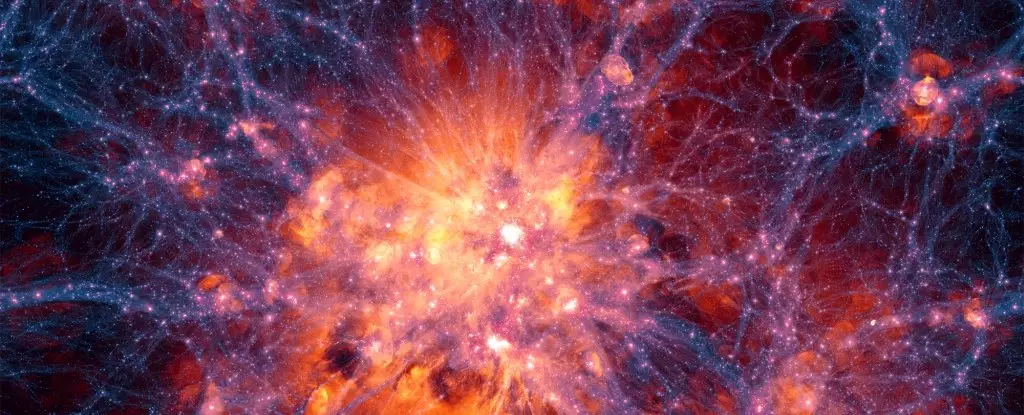Dark matter continues to baffle scientists and astronomers around the globe. It acts as a shadowy backbone to the cosmos, influencing the movement of galaxies and the curvature of space-time, yet it remains fundamentally undetectable and mysterious. According to physicist Tim Fuchs from the University of Southampton, “Dark matter remains one of the fundamental questions scientists are still trying to answer – it dictates the structure of our Universe but is still undetectable.” This incongruity underscores the need for innovative experimental designs to unravel the complexities surrounding dark matter.
The existence of dark matter was proposed to account for the gravitational effects observed in the universe. For example, when astronomers analyze the rotation curves of galaxies, they find that the outer regions spin much faster than would be expected based solely on the visible mass of the stars and planets present. This leads to a staggering conclusion: dark matter may actually outweigh visible matter by a ratio of about six to one. This revelation drives home the point that something unobservable is fundamentally altering the dynamics of our universe, and it has spurred extensive investigative efforts.
In a pioneering endeavor, physicists at the University of Southampton are preparing to launch a satellite experiment designed to probe the elusive nature of dark matter. The project is characterized by its unique approach: levitating sheets of graphite in microgravity to detect potential signs of dark matter. Fuchs explains the rationale, stating, “If there is a sufficiently high density of dark matter, a dark ‘wind’ will softly push our levitated particles by an amount we can measure – detecting it for the first time ever.”
Set to be launched aboard the Jovian-1 satellite, this experiment marks a significant milestone in dark matter research. The satellite, which is anticipated to be about the size of a shoebox, will carry multiple experimental setups developed by students from the University of Southampton, the University of Portsmouth, and Surrey University. The planned mission duration is two years, with launches expected to begin in 2026. Although there will be a notable wait for results, the potential findings could revolutionize our understanding of dark matter.
One of the challenges faced by scientists attempting to identify dark matter lies in the limitations of terrestrial experiments. Fuchs notes, “There are theories that say the dark matter interaction rate may actually be so high that it cannot penetrate our atmosphere or the mountains under which detectors have been built.” This insight provides perspective on why many ground-based experiments have failed to yield definitive evidence thus far.
Initiating a gravitational probe in space, where conditions are free from atmospheric interference, allows for a more sensitive investigation. The levitated graphite will serve as a gauge, as any influence from dark matter could generate measurable forces acting on the particles. If successful, this novel method could provide a new avenue for dark matter detection, potentially helping to reconcile theoretical models with observable phenomena.
The Southampton team’s initiative does not exist in isolation; it represents a broader trend of collaboration among universities and international scientific communities. Diverse approaches to understanding dark matter can accelerate progress, as shared knowledge and resources create a robust foundation for experimental design and analysis. As physicists engage in ongoing theoretical discussions and experimental pursuits, the cumulative findings could inform future research directions and refine existing models.
In the quest to illuminate the nature of dark matter, the Southampton experiment stands as a testament to the ingenuity and persistence of modern science. As researchers embark on this planetary and cosmic exploration, one can only hope that their efforts will yield the answers that humanity has long sought.
With dark matter remaining one of the great unanswered questions in physics, the path ahead is fraught with uncertainty yet paved with promise. The Southampton experiment embodies cutting-edge science and embraces the spirit of discovery. Although the satellite’s launch is a few years away, the anticipation builds, reminding us that even in the face of profound mystery, humanity’s quest for knowledge persists unwaveringly. In the end, whether dark matter is found or not, the journey itself holds intrinsic value, propelling advancements in our understanding of the universe and our place within it.

